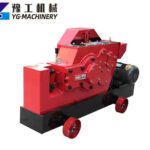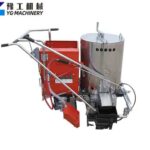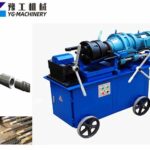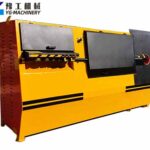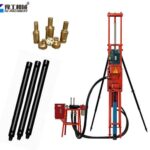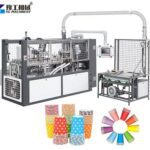Jumbo roll slitting machine, also known as a roll slitter or slitting rewinder, is a sophisticated piece of slitting equipment designed to efficiently and accurately slit large-diameter, wide rolls of material (the “jumbo roll”) into multiple narrower rolls. These narrower rolls can then be used for various applications, from packaging and labeling to manufacturing and printing. The slitting process involves unwinding the jumbo roll, passing the material through slitting knives or blades, and then rewinding the slit material onto individual cores, creating multiple smaller rolls of precise dimensions.
Components of a Jumbo Roll Slitting Machine
A typical roll to roll slitting machine comprises several key components:
- Unwind Stand: This component holds the jumbo roll and controls its tension during the unwinding process. Sophisticated unwind stands often incorporate features like automatic tension control and edge alignment systems.
- Slitting Unit: This is the heart of the machine, housing the slitting knives or blades and providing the mechanism for adjusting the slit width.
- Rewind Unit: The rewind unit winds the slit material onto individual cores, creating the finished rolls. This unit is crucial for maintaining consistent tension and ensuring properly wound rolls.
- Tension Control System: Maintaining consistent tension throughout the slitting process is critical for producing high-quality rolls. Tension control systems utilize various methods, including pneumatic, electric, and servo-driven systems.
- Web Guiding System: This system ensures that the material web remains aligned throughout the slitting process, preventing uneven slitting and waste.
- Control Panel: The control panel allows the operator to control and monitor all aspects of the machine’s operation, including speed, tension, and slit width.
- Safety Features: Modern paper roll slitting machines are equipped with various safety features, such as emergency stops, light curtains, and interlocks, to protect operators and prevent accidents.
Selecting the Right Jumbo Roll Slitting Machine:
Choosing the right roll-to-roll slitting machine is crucial for optimizing your converting operations. Several factors should be considered:
- Material Compatibility: The machine must be compatible with the type of material you are slitting (e.g., paper, film, foil, non-woven fabric). Different materials require different slitting methods and knife types.
Slitting Width Range: Consider the range of slit widths you require. The machine should be capable of producing the desired widths with accuracy and consistency. - Maximum Web Width and Diameter: Ensure the machine can handle the maximum web width and diameter of your jumbo rolls.
- Slitting Speed: Evaluate the machine’s maximum slitting speed and determine if it meets your production requirements.
- Tension Control: Proper tension control is essential for producing high-quality rolls. Choose a machine with a tension control system that is appropriate for your materials and slitting speeds.
- Automation Level: Consider the level of automation you require. Some machines are highly automated, while others require more manual intervention.
- Budget: Jumbo roll slitting machines represent a significant investment. Establish a budget and choose a machine that offers the best value for your money.
Maintenance of Paper Roll Slitting Rewinding Machines
- Proper maintenance is essential for ensuring the longevity and performance of your jumbo roll slitting machine. Regular maintenance tasks include:
- Knife Sharpening and Replacement: Sharp knives are crucial for clean slitting. Regularly inspect and sharpen or replace knives as needed.
- Cleaning: Keep the machine clean and free from debris.
Lubrication: Lubricate moving parts according to the manufacturer’s recommendations. - Inspection: Regularly inspect all components for wear and tear.
- Preventive Maintenance: Follow a preventive maintenance schedule to identify and address potential problems before they become serious.




